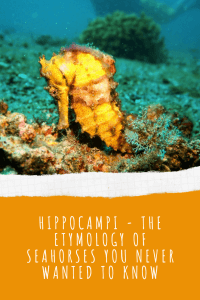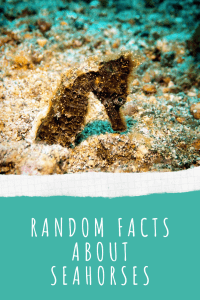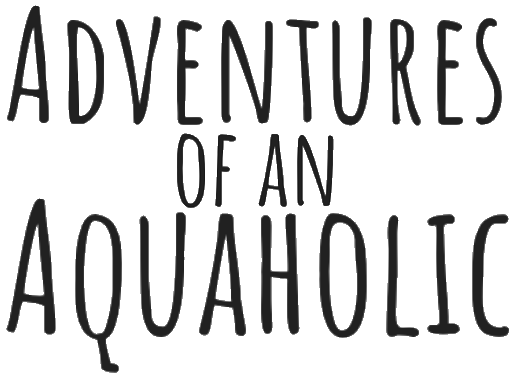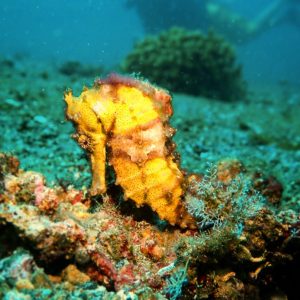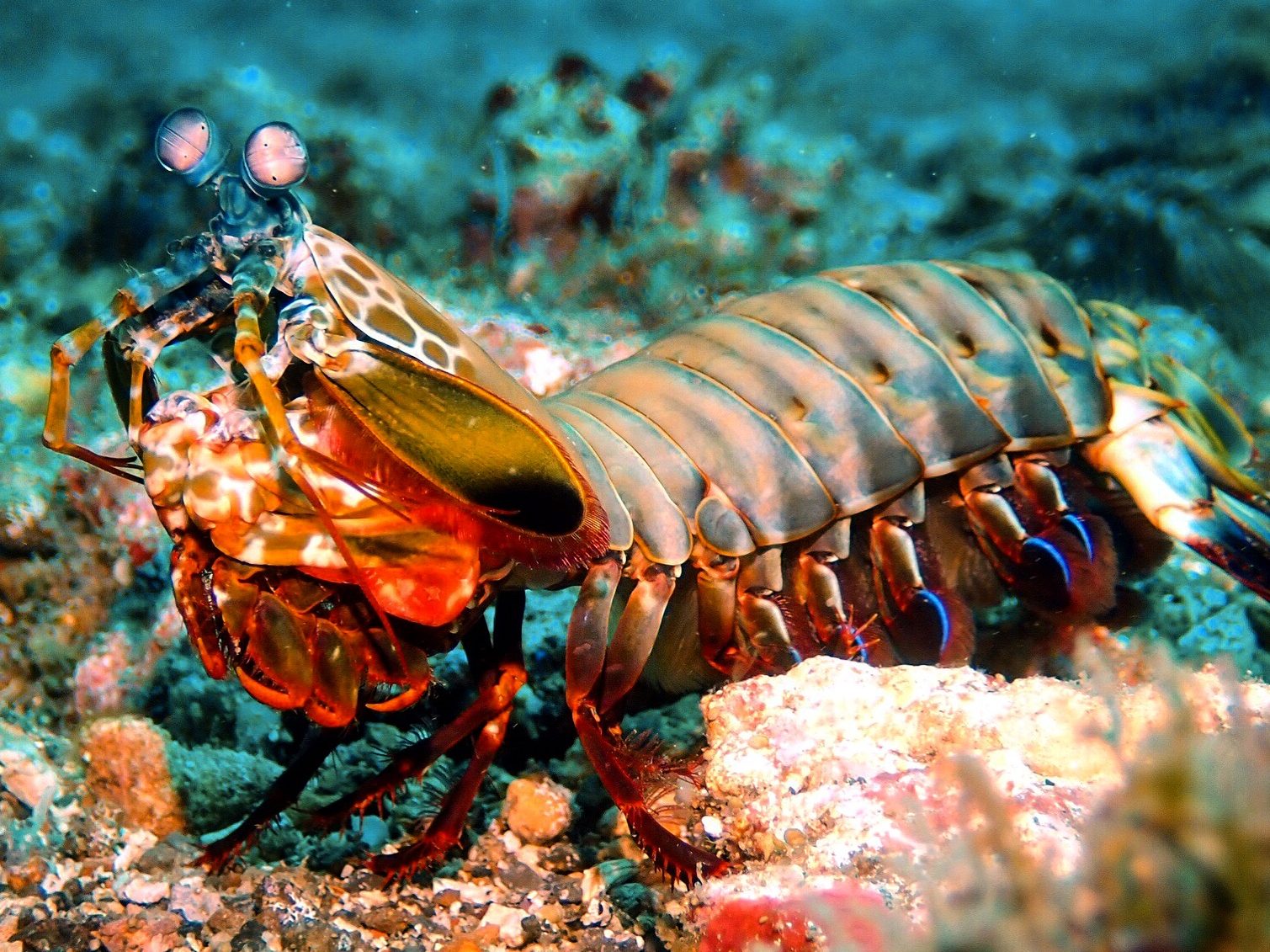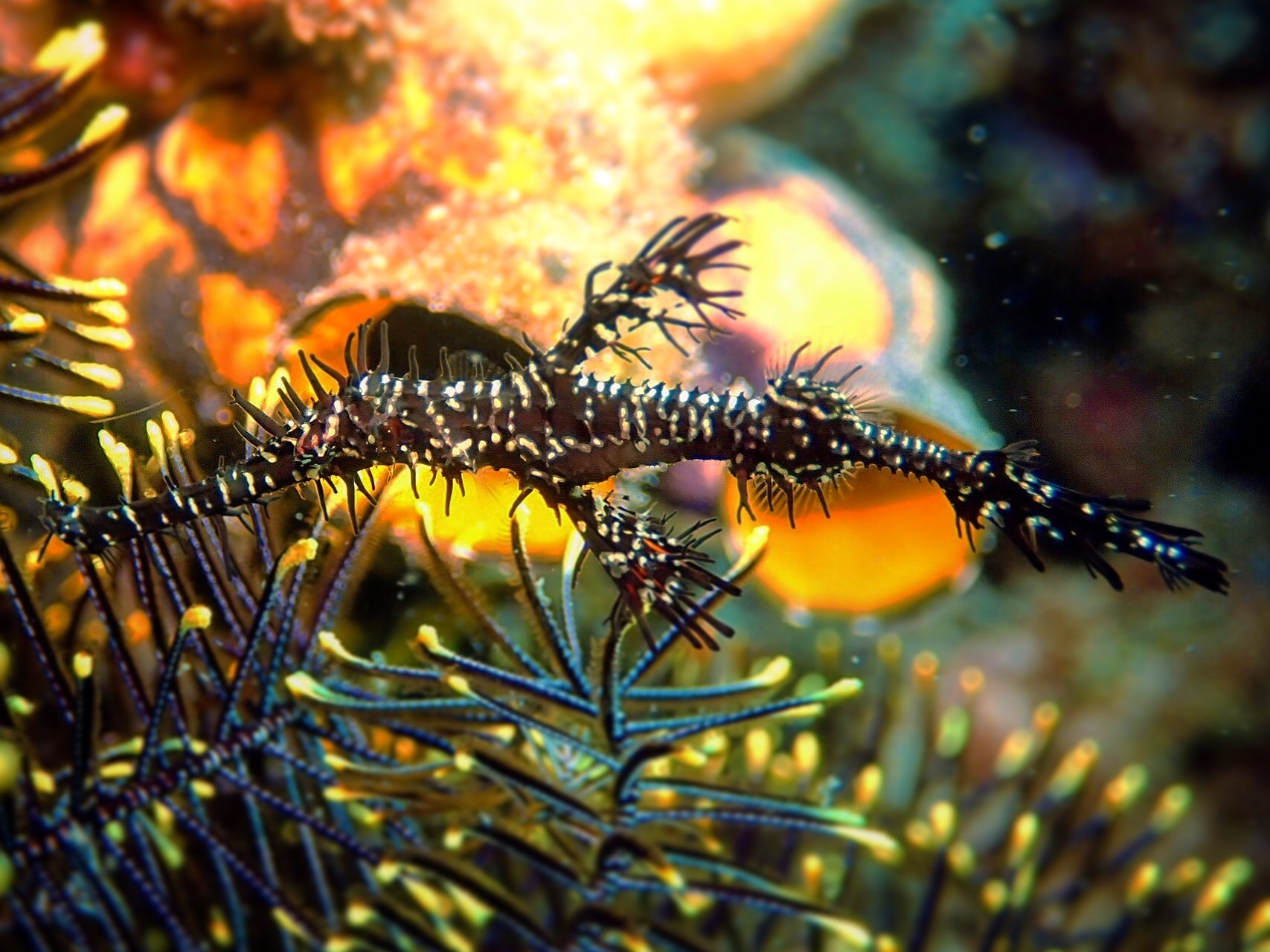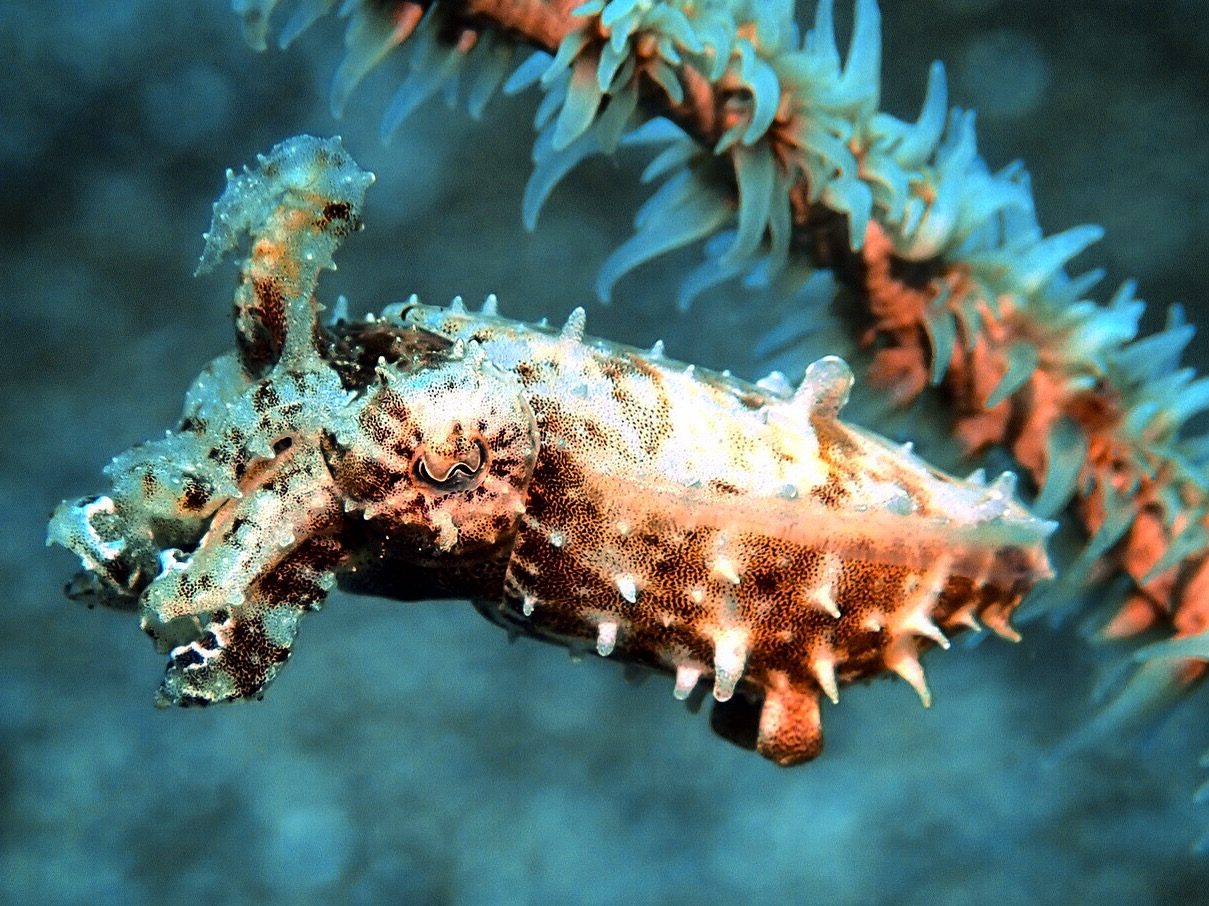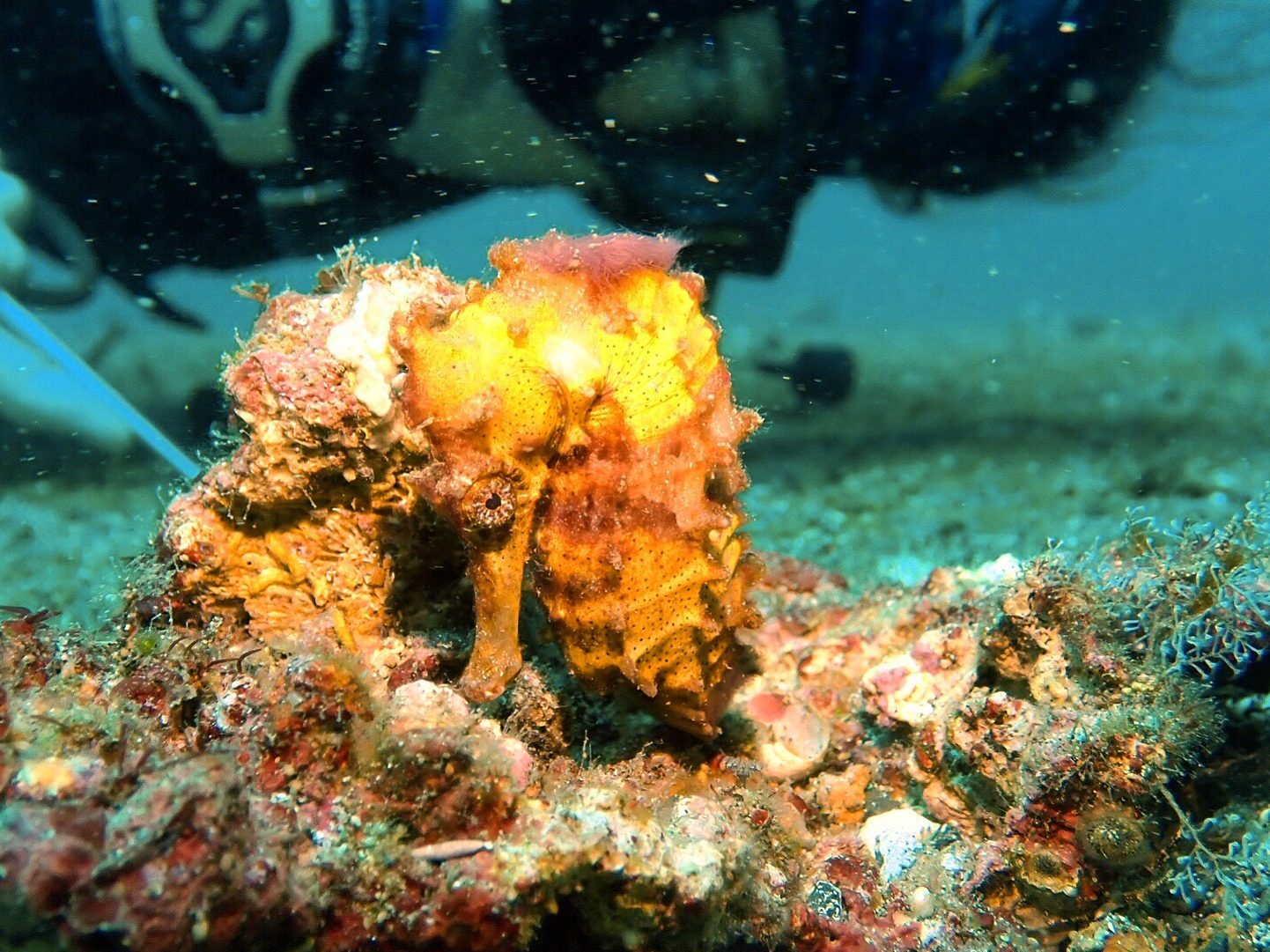
Hippocampi – The Etymology of Seahorses You Never Wanted to Know, and Some Other Random Facts
Did you know that the male seahorse is the member of the couple that gives birth? They’re quite unique that way in the animal kingdom. I meant to have some fun facts like that ready to go for you, but instead ended up geeking out on words, so bear with me here for a second. Or skip down to the numbered list below if you don’t share my enthusiasm for completely random (and probably useless) linguistics trivia.
Seahorses, funny looking things that they are, belong to the genus Hippocampus. This word originally comes from the Greek hippos, or “horse,” and kampos, or “sea monster.” Or perhaps it comes from the related word kampe, for “caterpillar.” Sea monsters and caterpillars are easy things to confuse. I could see how this could get mixed up.
In Greek mythology, the Hippokampos is a sea monster, with the upper body of a horse and the lower body of a fish (or perhaps a sea monster or perhaps a caterpillar). So you can see how the tiny, adorable seahorse, which resembled this fearsome carriage-drawing, aquatic creature of the gods, came to be called by a Latin derivation of the same name. So now that the Greek word has been stolen by Latin, it becomes correct to pluralize hippocampus into hippocampi. (Otherwise, Greek-derived words such as “octopus” never get pluralized to “octopi.” That’s a Latin thing.)
 |
| Fletch checking out a seahorse in Lembeh, Indonesia. |
There’s another puzzle piece here that you’re probably trying to work out in your head. Isn’t the hippocampus a part of the brain? It is! And it was discovered by Julius Caesar Aranzi in 1587 who said it resembled, you guessed it, a seahorse. So there you have it, all the useless etymology behind seahorses that you never wanted to know. Have I bored you to tears yet? Fine, then we’ll talk about dudes laying eggs.
1. The dudes don’t actually lay the eggs.
Females produce the eggs and then deposit anywhere between 50-1500 of them (depending on the species) into the male’s pouch (called a ‘brood pouch’) for fertilization, via a special tube called an ‘ovipositor.’ The male then carries and cares for the eggs, allowing the female to produce more eggs right away in order to speed up the reproduction process. The male carries the eggs anywhere from ten days to six weeks (depending on the species), and then gives live birth to dozens or even hundreds of baby seahorses, called ‘fry.’ These fry are completely independent and go off on their merry way into the blue.
2. Seahorses are fond of dancing.
When a seahorse lady finds a potential partner, she greets him daily. This greeting consists of changing colors, swimming with the seahorse version of holding hands, which is linking tails, and swimming in circles around each other. These greetings can last for hours, every day. When they feel good and bonded and are ready to make little fry, the daily greetings become a courtship dance that lasts anywhere from hours to even days.
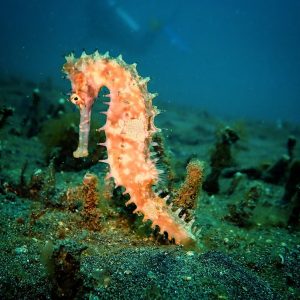 |
| Seahorses, of which there are 40-55 species depending on whom you ask, are difficult to determine the species due to their ability to change colors. |
3. …And are terrible swimmers.
While seahorses may be expert dancers, they are arguably the worst-swimming fish in the ocean. They are fish, due to the fact that they have gills and fins, but those fins are about as useful as Nemo’s right fin. Seahorses propel themselves via a small fin on their back that is capable of fluttering up to 35 times per second. They steer with the even smaller pectoral fins behind their gills where a person’s ears would be. Does this sound exhausting? Because it is, and seahorses can easily die of fatigue. (I guess we saved that seahorse’s life that was tumbling down the sandy slope in Manado!)
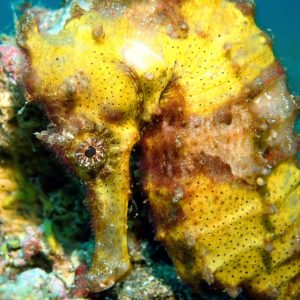 |
| Here is a closeup of a pretty seahorse face and you can still barely make out the little fin behind her gills. |
4. Seahorses have very few natural predators, but spend lots of time themselves eating.
Crabs enjoy a tasty seahorse every now and again, but for the most part, they are too bony and indigestible for most marine animals to eat. You may be wondering now what seahorses eat, and that is a great question, because they have very interesting eating habits. Seahorses suck up foods such as plankton and teeny tiny fish through their nose straws from as far away as 3 cm (which is quite a ways when you’re the size of a seahorse). Due to the facts that they have no teeth and no stomach, and food passes through their digestive systems fairly quickly, seahorses must eat almost constantly to stay alive.
5. But that doesn’t mean that they live without threat.
Crabs eating seahorses are just part of the circle of life. The main threat to their existence comes from a certain land-dwelling monster.
An estimated 150 million seahorses are plucked out of the ocean every year for use in traditional Chinese medicine. They are believed to help with everything from impotence, to wheezing, nocturnal enuresis, pain, and labor induction. Now granted they are named after mythical beasts, and so those who hopefully believe in the fantasies of magical cures might be inclined to think that eating a seahorse would have mystical healing properties. Let me tell you a little secret though. If it sounds too good to be true, it most likely is. Leave the poor seahorses alone.
An estimated one million seahorses are boiled out in the sun to die and become souvenirs every year in the curio trade. Unless you are the kind of creep who has a secret collection of dead animals in the closet, don’t buy these souvenirs and contribute to the demand for them.
Another estimated million seahorses are fished out of the ocean every year for the aquarium trade. While they are extremely cute and adorable, and resemble tiny versions of ancient Greek mythical monsters, it is estimated that less than 1000 survive more than six weeks in captivity. So unless your aquarium keeping skills are at a master, black-belt level, don’t experiment with endangered critters. Stick to the goldfish.
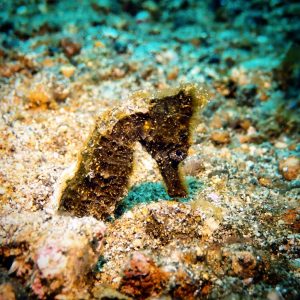 |
| If I hide my tail in the sand, maybe no one will take me. |
6. Seahorses have unique features.
I’d hate to leave you on a depressing note, and so enjoy this last little tidbit. Seahorses have unique markings. The crown, called a ‘coral net,’ is different on each seahorse. That’s right, just like your favorite Disney princesses, seahorses each have a unique little crown that they wear. Except they wear theirs permanently. I’m suddenly wishing I had the artistic skills to draw all the Disney princesses as seahorses. Why not? They’ve been artistically reimagined in every other form it seems. If you have some mad artistic skills, send me your best seahorse drawing!
